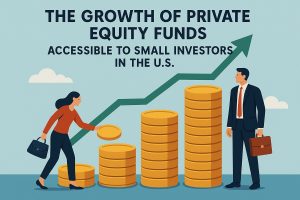In recent years, the financial landscape has undergone significant changes, particularly in interest-related policies. One of the most intriguing developments has been the implementation of negative interest rates. These rates, which essentially charge banks for holding excess reserves, have various implications, especially for savings accounts in the USA.
While designed to spur lending and stimulate the economy, negative interest scenarios have raised concerns about their impact on personal savings. Let’s explore how these unconventional economic strategies are influencing savings behavior and what they mean for the average American saver.
Understanding negative interest rates

Negative interest rates are a relatively novel concept in the realm of monetary policy. Traditionally, banks pay interest on deposits, rewarding savers for keeping their money in the bank. However, with negative interest policies, the opposite occurs — depositors may end up paying the bank to hold their money.
This unusual scenario arises when central banks lower rates below zero to encourage financial institutions to lend more freely, thereby stimulating economic activity. The primary goal is to counter deflation and foster investment by making borrowing cheaper than saving.
In practice, negative rates invert the typical incentives associated with savings. Conventional deposits, which historically grew over time due to the accumulation of interest, now face the potential for diminishment if banks decide to pass on the costs of negative interest policies to their customers. This poses a unique challenge for savers and influences broader financial decisions.
The ripple effect on traditional savings
The primary concern regarding negative interest policies is their impact on traditional savings accounts. Historically, savings accounts have served as a reliable vehicle for earning a modest return while ensuring the safety of deposited funds.
However, in a negative rate environment, this equation changes drastically. Instead of earning interest, account holders might find that their principle gradually declines if banks decide to impose these policies on consumer deposits.
This prospect has significant ramifications for the financial planning strategies of average citizens. It necessitates a reevaluation of how individuals save and where they choose to park their money. With the potential for negative returns, traditional savings accounts may no longer be seen as safe havens.
Adapting to a new financial landscape
In light of the challenges posed by negative interest environments, financial literacy becomes increasingly vital. Savers must now navigate a landscape where the once straightforward decision to save in a bank requires more careful consideration. Education on different financial instruments and their associated risks is crucial to making informed decisions.
Moreover, understanding the broader economic implications of these rates can empower individuals to strategize effectively. This includes knowing the benefits and drawbacks of diversifying one’s portfolio and leveraging financial advisors to maximize gains.
While negative interest scenarios present new obstacles, they also offer opportunities for those willing to adapt. By staying informed and proactive, savers can mitigate the impact of these unconventional policies and safeguard their financial well-being.
What these changes mean for the US economy
The influence of negative interest policies extends beyond individual savers, impacting the broader US economy. These rates affect how banks operate, invest, and interact with both individual and corporate clients. For banks, the shift may challenge traditional business models and profitability.
The potential decrease in consumer savings could lead to shifts in consumption patterns. With savers discouraged from holding onto cash, spending and investment might increase, supporting economic growth. However, it also increases the risk of inflation and asset bubbles, requiring vigilant monetary oversight.
Ultimately, the long-term effects of negative rates on the US economy remain uncertain. As the nation grapples with these new norms, the balance between stimulating growth and maintaining financial stability will be key.
The role of policymakers and financial institutions
Policymakers and financial institutions play a vital role in navigating the challenges presented by negative interest environments. Central banks must carefully consider the broader economic context when implementing such measures, ensuring that policies do not inadvertently harm savers or destabilize financial systems.
Financial institutions, on the other hand, need to adapt their offerings to meet the evolving needs of their customers. Transparent communication and innovative products can help mitigate potential adverse effects on savers.
Cooperation between policymakers, banks, and consumers is essential to address the complexities posed by negative interest scenarios. By working together, these stakeholders can foster a resilient financial ecosystem that supports both economic growth and individual prosperity.
The path forward for savers
As savers confront this unfamiliar landscape, embracing financial flexibility is paramount. Exploring diverse investment options, enhancing financial literacy, and maintaining an adaptive mindset are crucial strategies for navigating negative interest challenges.
Additionally, staying informed about policy changes and their potential impact on personal finances empowers individuals to make informed decisions. Leveraging technology and digital tools can also aid in tracking savings and investments, offering savers greater control over their financial futures.
Ultimately, while negative rates present significant challenges, they also encourage innovation and resilience in financial planning. By adapting to these changes proactively, savers can sustain their financial goals amidst an evolving economic reality.



